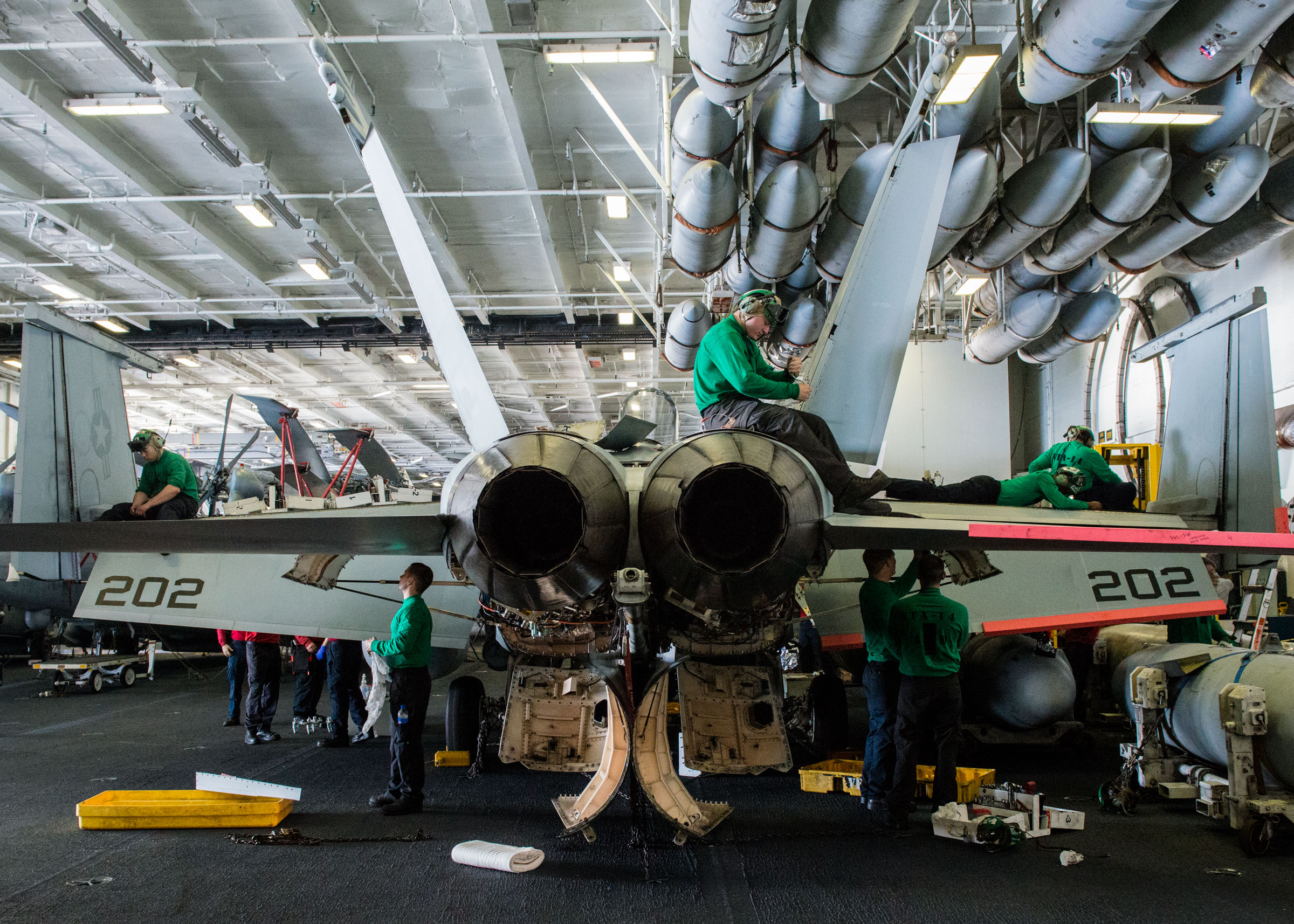
Boeing will begin buying material this summer ahead of inducting the first F/A-18E/F Super Hornet into the service life modification program sometime next year, company officials told USNI News.
The Super Hornet life extension program will begin whenever the first jet hits its 6,000 flight hour limit, and the company expects that will happen next year. A Service Life Assessment Program (SLAP) is ongoing to determine what parts of the airplane will have to be replaced, reinforced or otherwise modified to help the jet get 3,000 more hours of life, Boeing F/A-18 and EA-18G Programs Vice President Dan Gillian told USNI News earlier this month.
“We’re still working through that but we have a lot of that behind us, with a good understanding of what needs to be fixed,” he said.
“The general statement is that, compared to the classic (F/A-18A-D) Hornet, there’s not a single center barrel section kind of thing; it’s more distributed, smaller throughout the airplane. The big challenge that has really hurt the classics that we’re trying to deal with is the unknowns. So our engineering analysis tells us what we should have to change, the tear-down airplane will validate our engineering was right, and then it’s dealing with the unknowns.”
When the Hornets began their service life extension program in 2012 it quickly became apparent that each airplane had its own unique challenges beyond replacing the center barrel section, and the depots charged with performing the modifications were not equipped to rapidly address these “unknowns” that were unique to each plane and not discovered until workers started pulling the planes apart.
To ensure the Super Hornet life extension work goes smoother, Gillian said Boeing is taking a very data-driven “factory production approach” to preparing for the work.
“Today (with Hornets), when you open and airplane and find a problem, you’re now lead-time away from going to order a part to bring it back, compared to using predictive tools and data analytics to have parts available, so when you find a part that needs to be fixed that you weren’t expecting, you can deal with it in a shorter turn,” he explained.
As part of the SLAP analysis work, engineers gathered as much data as they could about the material condition of the Super Hornets and developed an idea of what the service life modification work would look like, and they are now beginning to open up two learning aircraft in St. Louis to see if their predictions match up to the actual condition of these two planes.
“The learning aircraft were designed to help us get a better feel for the unknowns,” Gillian said.
“We do a lot of work with the Super Hornets down at Cecil Field today, that gives us information about corrosion and things like that. And we’re partnered with the Navy and helping support the fleet squadrons and [Fleet Support Teams], so there’s a lot of information that helps us build, using data analytics, models for what we need to buy and put on the shelf to be ready to deal with unknowns, so we can increase the throughput.”
Mark Sears, Boeing’s service life modification program director, said in the same interview that as the SLAP work wraps up, “we’re finishing our analysis for what material we want to lay in in advance of the first aircraft, and we’re facilitizing out St. Louis both from a facility, a tooling and a people perspective.”
Sears added that Boeing will begin buying materials for the first plane’s life extension work in mid-summer, in anticipation of the first life extension contract coming in early 2018 and the first plane being inducted shortly after that.
Gillian said the first few airplanes would probably take about a year and a half to complete, with Boeing looking to lower that figure as time goes on. He declined to say how long the classic Hornets have taken on average but noted the gap in work for each plane due to having to order parts and wait for them to be manufactured and delivered before the life extension work can continue. Gillian acknowledged that some Super Hornets may be more problematic than others but said he expected a much greater throughput at the depots with the Super Hornets compared to their classic Hornet predecessors.





